
Our cameras allow us to shoot in JPEG and/or Raw. Some cameras in the past did allow shooting in TIFF but to the best of my knowledge, these days, cameras do not have TIFF as a choice. This was probably because TIFF files are horrendously large (much larger than Raw files) and as such writing to the memory card takes a long time. At the same time, it fills up the memory card very quickly.
So when it comes to recording the data to the memory card, should you use JPEG or Raw?
Note: JPEG files are marked as .jpg whereas Raw files are marked differently depending on the camera manufacturer. Canon Raw files are marked CR2, Fujifilm Raw files as RAF, Nikon Raw files as NEF (Nikon Electronic Format), Olympus uses ORF as a suffix, Panasonic uses RAW/RW2, Pentax uses PEF, while Sony mentions their Raw files as ARW. These are proprietary file formats and for this reason, manufacturers themselves provide the software that can read them. These software packages are known as Raw Converters. Some software developers (like Adobe) reverse-engineer the Raw files and provide their own Raw Convertor (Adobe Camera Raw or ACR).
There is also one more Raw file format called DNG (Digital Negative) which unlike all the other Raw files mentioned, is an open non-proprietary standard. This is being promoted by Adobe but only a few manufacturers follow this.
Let’s consider both sides of the coin.
Denne historien er fra May 2022-utgaven av Smart Photography.
Start din 7-dagers gratis prøveperiode på Magzter GOLD for å få tilgang til tusenvis av utvalgte premiumhistorier og 9000+ magasiner og aviser.
Allerede abonnent ? Logg på
Denne historien er fra May 2022-utgaven av Smart Photography.
Start din 7-dagers gratis prøveperiode på Magzter GOLD for å få tilgang til tusenvis av utvalgte premiumhistorier og 9000+ magasiner og aviser.
Allerede abonnent? Logg på
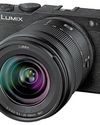
SELECTING THE RIGHT SYSTEM
Buying a new mirrorless camera can be a daunting decision. Not only are cameras very expensive, but also choosing a brand with an exclusive mount can mean locking yourself into a system.
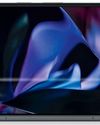
Capturing Momenta Folding Boundaries
With the Pixel 9 Pro Fold, Google takes cues from its impressive line-up of Pixel smartphones and resolves some of the design oddities we’ve seen on foldable smartphones from more seasoned competitors in the category.
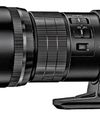
Super Sharp
Smart Photography reviewed the OM System OM 1 Mark II camera last month. If you haven’t read the review, please do so.

HIDDEN FEATURES OF YOUR CAMERA
Ashok Kandimalla has been in the photographic field for over three decades and has extensive experience in both film and digital photography.

Hahnemühle Hemp Paper at Olympics & Paralympics 2024
As the 2024 Paris Olympics and Paralympics embraced sustainability, Hahnemühle’s Digital FineArt Hemp paper played a central role as the exclusive medium for the official Premium Posters. This eco-friendly, plant-based paper aligned with the Games’ commitment to sustainability and delivered exceptional print quality. From limited-edition posters to the Artistic Posters Programme, Hahnemühle’s innovative use of hemp fibres showcased how high-value print products continue to thrive in a rapidly digitizing world.

The Lasting Power of Print: Preserving Memories Through Photobooks
I am a software engineer turned photographer, and my journey in photography has been a constant companion throughout my life.

The Wildlife of Eastern Mongolian Steppe
Mohit Ghatak is an engineer and a management postgraduate and works as a regional business leader in Singapore.

Abhishek Dey's Photo World
I identify myself more as a travel photographer than a purely landscape photographer.
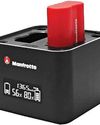
Manfrotto lithium ion batteries for cameras
Manfrotto has introduced its new MKII lithium-ion batteries, featuring a higher capacity of 2400mAh for Nikon, Sony, Canon, Fuji, and OM System cameras.
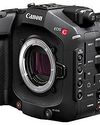
Canon to have EOS C80 with enhanced features
Canon announced the launch of its latest Cinema EOS camera, the EOS C80, just ahead of the International Broadcasting Convention (IBC) 2024.